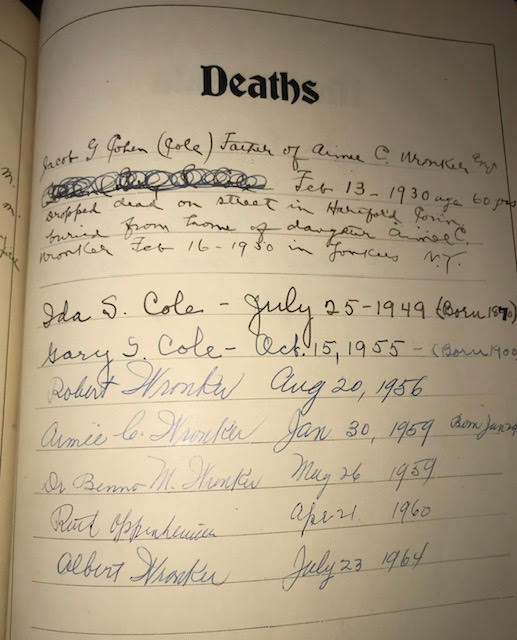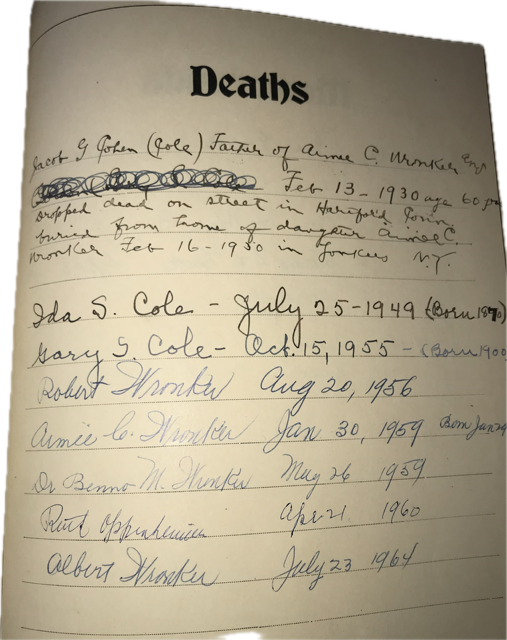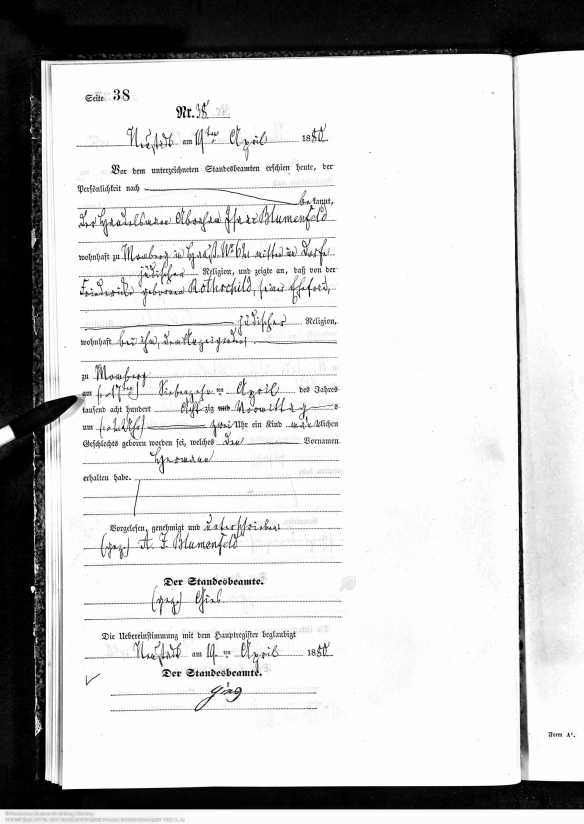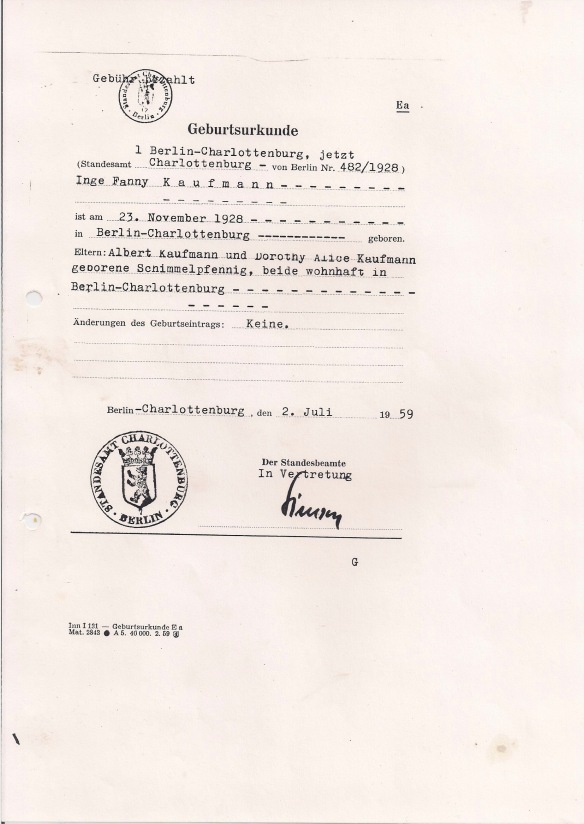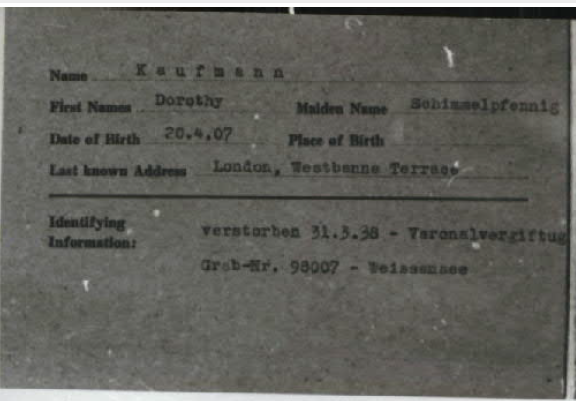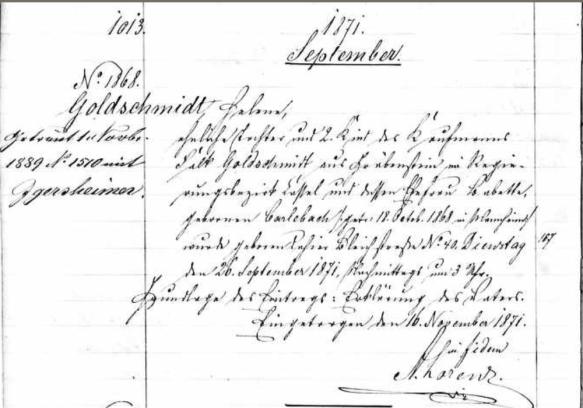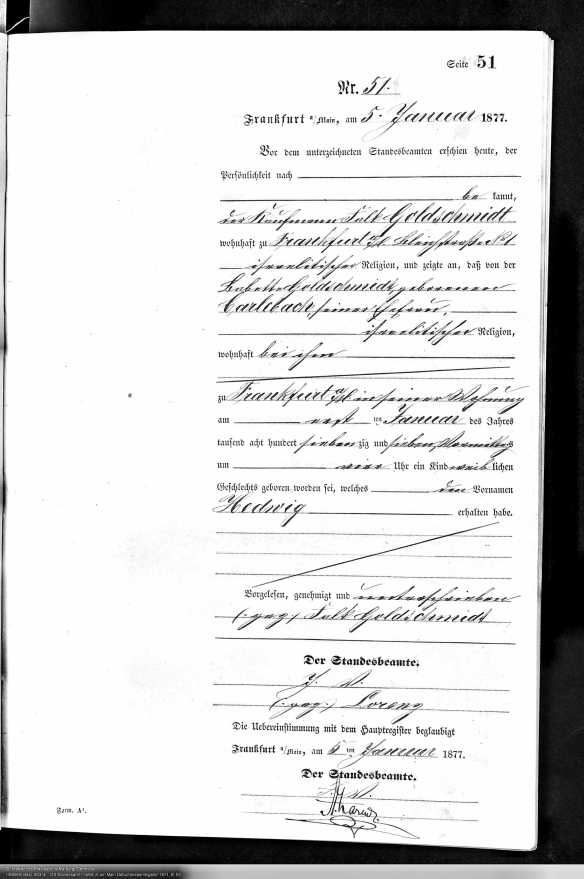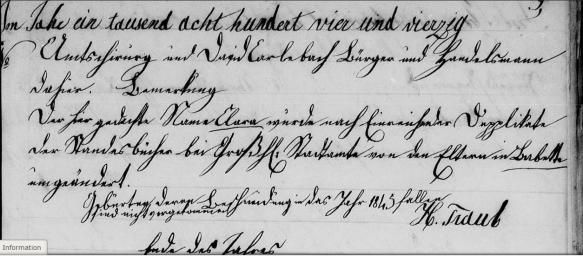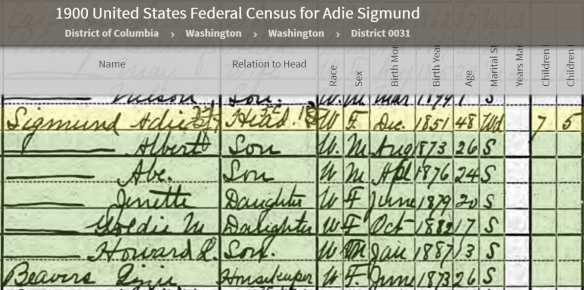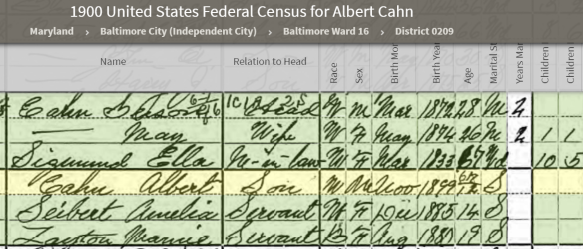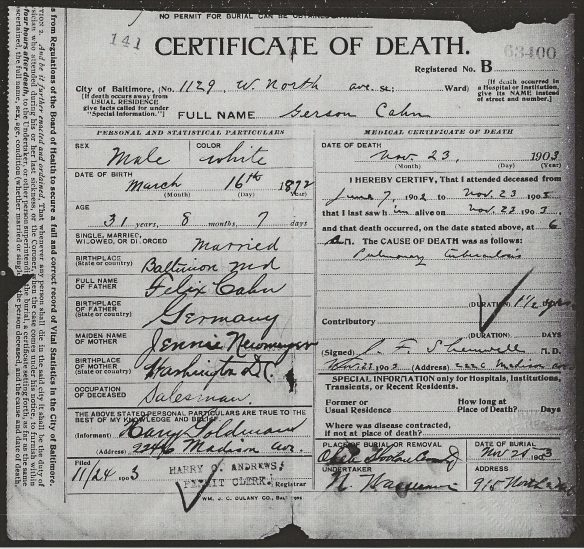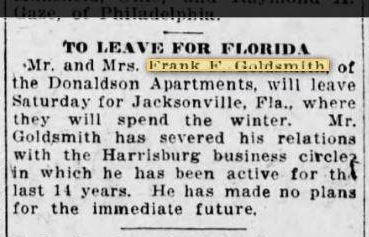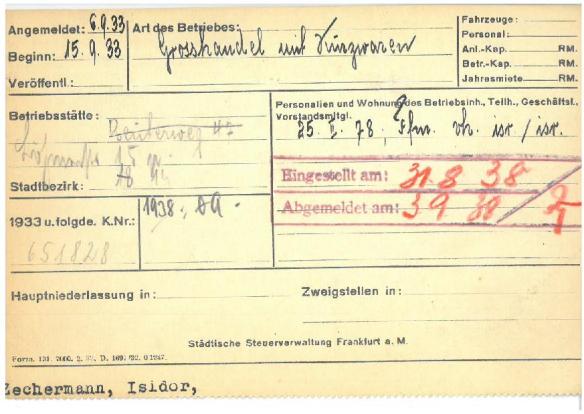I continue to be amazed by the people who find my blog and contact me—whether it’s because they are related to someone I wrote about (and thus to me) or because they knew someone I wrote about or because, as in this case, they have found some artifact that relates to someone I wrote about. That is how Martin Gonzalez found me and told me about Jacob Cohen’s bible.
Back in early January 2024, Martin wrote to ask me if I was related to Jacob and Ida Cohen. When I asked him why, he told me that he owned a bible that had their names in it. He sent me a few images of the bible that showed Jacob and Ida’s names.
 I did a search of my family tree and realized that the Jacob Cohen who had married Ida Siegel was my second cousin, twice removed, the great-grandson of my three-times great-grandfather, Hart Levy Cohen, and my grandfather John Nusbaum Cohen’s second cousin. You can read what I’ve already written about Jacob and Ida and their family (and find sources) in my earlier posts here and here. I will only include an outline of their lives here.
I did a search of my family tree and realized that the Jacob Cohen who had married Ida Siegel was my second cousin, twice removed, the great-grandson of my three-times great-grandfather, Hart Levy Cohen, and my grandfather John Nusbaum Cohen’s second cousin. You can read what I’ve already written about Jacob and Ida and their family (and find sources) in my earlier posts here and here. I will only include an outline of their lives here.
Jacob was born on March 9, 1870, in Washington, DC, to Moses Cohen and Henrietta Loeb. As a young man, Jacob moved to New York City, where he first worked as a bookkeeper. He married Ida Siegel in 1894, and they had two children: Aimee, born in 1895, and Gerson, born in 1900. You can see those births mentioned on this page from the bible:
One of the images Martin shared from the bible showed that Ida had given Jacob the bible as a gift on this 38th birthday on March 9, 1908.
So I wrote back to Martin and told him that I was in fact related to Jacob Cohen and asked him how he had ended up with Jacob’s bible. He told me the following story:
Back in 1977, when I was 16 years old and in high school, I worked as a stock boy at Nadeen’s Department Store in the Bronx (NY). One of my responsibilities was to sweep the floors. One day I came across a dirty old box under one of the clothing racks. I asked my store supervisor (Nathaniel, a devout Christian) about the box and he showed me its contents.
Two things I remembered seeing in the box vividly was a beautiful vintage radio, the kind that operated from glass tubes and an old, dusty Bible. As we spoke, he realized I had never read the Bible. So, he gave it to me as a gift. Nat told me it was previously given to him by our store manager at the time, Jack Katz.
In 1979, I graduated high school and joined the Marine Corps. The Bible stayed at my parents’ apartment while I toured.
After the service, a few years later, I came back home, and the book has been with me ever since. The Bible is in the plastic linen bag my wife came across to protect it and it fits perfectly!
Martin then sent me more images from the bible, including this one with some unfamiliar names.
I set off to try and identify those people and realized that many of them were not in fact blood relatives of Jacob or Ida. But to understand how those names ended up in the bible, you need a little more background about Jacob, Ida, and their children. Again, except where noted, this information and my sources are from the earlier blog posts linked to above.
On February 12, 1917, Jacob and Ida’s daughter Aimee married Lester Wronker. Aimee and Lester had a son, Robert, who was born in April, 1919. In 1920, they were living in Manhattan.
In 1925 Jacob and Ida were living in Manhattan, and Jacob was working as an insurance agent. Their daughter Aimee and her husband Lester and their son Robert were now living in Yonkers. Sometime thereafter, Jacob changed his surname from Cohen to Cole. His son Gerson also changed his name to Gary Cole and was living in 1930 in Detroit as a credit manager for a furniture business.
Jacob died on February 13, 1930.
In 1940, Jacob’s widow Ida was living with Aimee and Lester Wronker in Yonkers. Their son Robert Wronker graduated from Princeton University in 1940. Tragically, Robert died on August 20, 1956, after a long illness. He was only 37 years old. He had never married or had children. Meanwhile, in Detroit, Jacob’s son Gary Cole had married Wanda Budzinsky in 1941, and they had two sons.
Ida Siegel Cohen/Cole died in 1949. Sadly, neither of her children outlived her by very long. Gary Cole died in 1955 at 55; his sister Aimee Cohen Wronker died in 1959 at 64. Thus, with Aimee’s death, the only direct descendants of Jacob G. Cohen and Ida Siegel who were still living were their two grandsons through their son Gary, and they were just teenagers and living in Detroit.
So what happened to Jacob’s bible after Aimee died in 1959 and Gary, Ida, and Jacob were already deceased? It appears that it was in the hands of Lester Wronker, Aimee’s widower, Jacob’s son-in-law.
Lester remarried in 1961, two years after Aimee’s 1959 death. His second wife was Claudia Langfeld Bamberg,1 a widow herself with one son, Abbot Strouse Bamberg, and two granddaughters, Abbot’s daughters Judith and Carol.2
You can see that someone—Claudia probably—added information about Claudia, her son Abbot, and her two granddaughters Judith and Carol to Jacob’s bible. Notice how the handwriting and the ink is noticeably different from the earlier entries made by Jacob or Ida or Aimee.
So how did the bible end up at Nadeen’s in 1977 where Martin discovered it? No one knows for sure. But after Lester Wronker died in 1976, it appears that Claudia and her son and granddaughters must have gotten rid of the bible, and somehow it ended up in a dirty old box in Nadeen’s women’s clothing store in the Bronx, where Martin Gonzalez discovered it in 1977 and kept it safe for close to fifty years.
Martin contacted me because he wanted to be sure that the bible did not someday once again end up in a dirty box in the backroom of some store or in a landfill. He offered it to me, but I suggested that it would be better to donate it to a library, museum, or archive where it would be kept safe in perpetuity. Martin liked that suggestion and has now sent it to the Jewish Genealogical Society of New York.
Today we hear so much about the ugliness in the world—the hatred, the anger, the polarization. But we also need to remember that there are also wonderful, loving, and generous people in the world who only want to do the right thing. Martin Gonzalez is one of those people. He easily could have done nothing, and Jacob’s bible might once again have been lost. But he took the time to search for someone who might help him preserve it, and fortunately he found my blog. Thank you, Martin, for restoring my faith in people and reminding me to believe that good can prevail over evil and love can prevail over hate. You have done an amazing mitzvah by taking such good care of Jacob’s bible.
- Lester Wronker, Gender Male, Marriage Date 6 Sep 1961, Marriage Place New Rochelle, New York, USA, Certificate Number 40700, Records Sharing Certificate Number (Name), Lester Wronker, Claudi L Bamberg, Claudi L Langfeld, New York State Department of Health; Albany, NY, USA; New York State Marriage Index, Ancestry.com. New York State, Marriage Index, 1881-1967 ↩
- See “Abbot Bamberg, Former New Rochelle Resident,” The Daily Times (Mamaroneck, NY), May 23, 1990, p. 4. ↩




